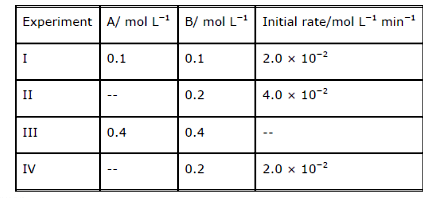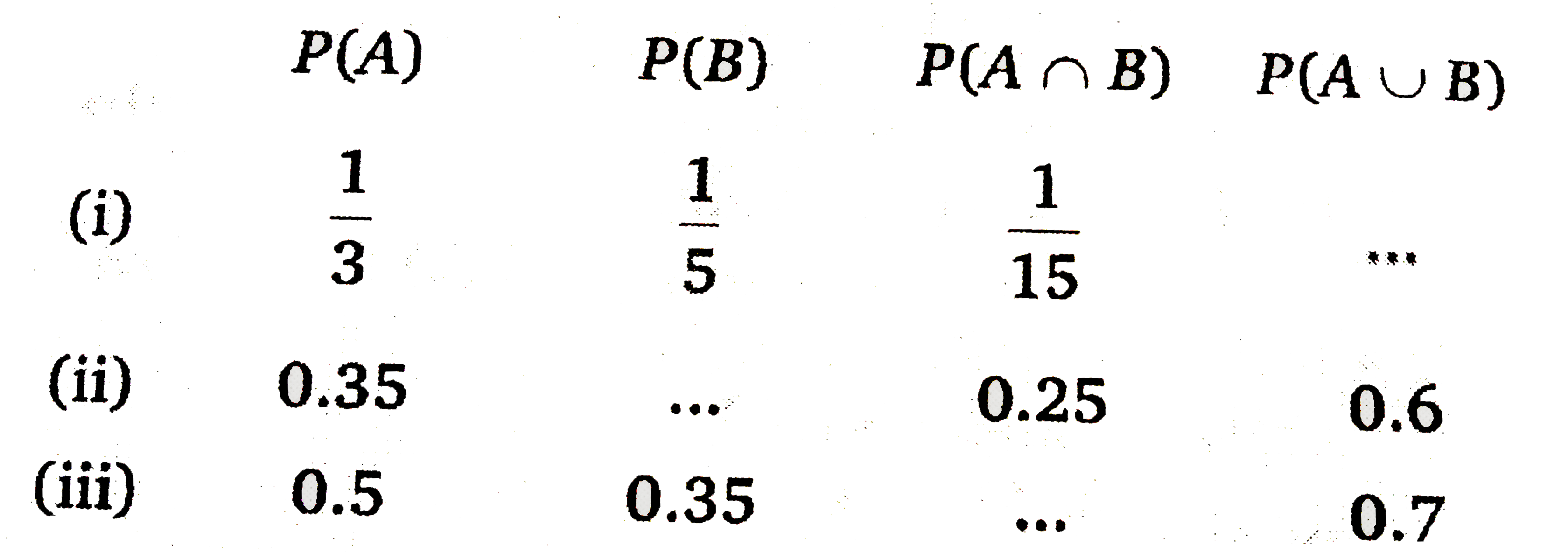The reaction between A and B is first order with respect to A and zero order with respect to B. Fill in the blanks in the following table:

The given reaction is of the first order with respect to A and of zero order with respect to B .
Therefore , the rate of the reaction is given by ,
Rate = k[A]1[B]0
⇒ Rate = k [A]
From experiment l , we obtain
2.0×10−2molL−1min−1=k(0.1molL−1)
⇒k=0.2min−1
From experiment ll , we obtain
4.0×10−2molL−1min−1=0.2min−1[A]
⇒[A]=0.2molL−1
From experiment lll , we obtain
Rate = 0.2−1min×0.4molL−1
=0.08molL−1min−1
From experiment IV , we obtain
2.0×10−2molL−1min−1=0.2min−1[A]
⇒[A]=0.1molL−1
Topper's Solved these Questions
- CHEMICAL KINETICSBook:NCERT ENGLISHChapter:CHEMICAL KINETICSExercise:Exercise
Explore 1 Video
- CHEMICAL KINETICSBook:NCERT ENGLISHChapter:CHEMICAL KINETICSExercise:SOLVED EXAMPLE
Explore 1 Video
- BIOMOLECULESBook:NCERT ENGLISHChapter:BIOMOLECULESExercise:Exercise
Explore 33 Videos
- CHEMISTRY IN EVERYDAY LIFEBook:NCERT ENGLISHChapter:CHEMISTRY IN EVERYDAY LIFEExercise:Exercise
Explore 32 Videos
Similar Questions
Knowledge Check
The reaction between X and Y is first order with respect to X and second order with respect to Y. If the concentration of X is halved and the concentration of Y is doubled, the rate of reaction will be
Athe same as the initial valueBthree times the initial valueCdouble the initial valueDhalf the initial value.The reaction between X and Y is first order with respect to X and second order with respect to Y. If the concentration of X is halved and the concentration of Y is doubled, the rate of reaction will be
Athe same as the initial valueBthree times the initial valueCdouble the initial valueDhalf the initial value.The reaction between X and Y is first order with respect to X and second order with respect to Y. If the concentration of X is halved and the concentration of Y is doubled, the rate of reaction will be
Athe same as the initial valueBthree times the initial valueCdouble the initial valueDhalf the initial value.
If reaction between A and B to give C shows first order kinetics in A and second order in B, the rate equation can be written as
View SolutionThe initial rate of a reaction A+B→ Products is doubled when the concentration of A is doubled and increases eight fold when the initial concentration of both A and B are doubled. State the order of the reaction with respect to A and with respect to B. Write the rate equation.
View SolutionThe initial rate of a reaction A+B→ Products is doubled when the concentration of A is doubled and increases eight fold when the initial concentration of both A and B are doubled. State the order of the reaction with respect to A and with respect to B. Write the rate equation.
View SolutionThe initial rate of a reaction A+B→ Products is doubled when the concentration of A is doubled and increases eight fold when the initial concentration of both A and B are doubled. State the order of the reaction with respect to A and with respect to B. Write the rate equation.
View SolutionThe reaction A+B→C has zero order. Write rate equation.
View Solution

